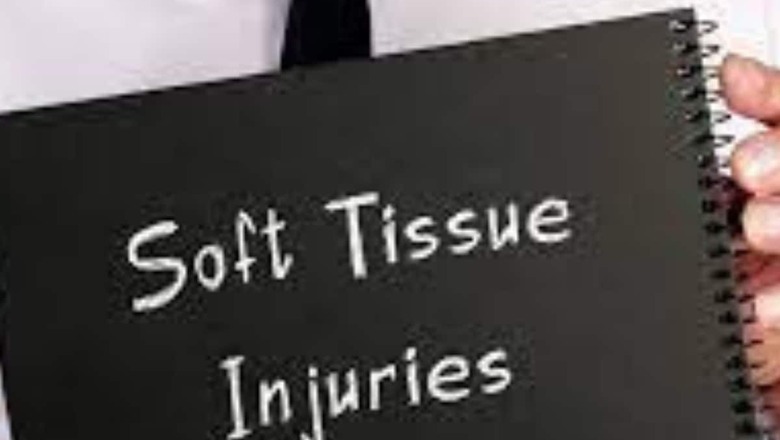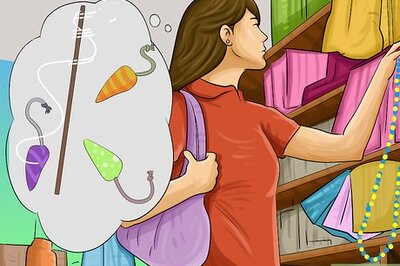
views
It is not unusual for most people to believe that the field of orthopaedics is where doctors only dabble with matters related to bone health, however, in reality, the scenario is slightly different. Doctors specialising in ortho-science can also treat tissue injuries, big or small. The most common tissue injury is when the soft tissues get compromised and that often happens when an acute injury or an overuse injury happens such as sprains and strains.
Dr. Abhijit Agashe, Consultant Orthopedic and Joint Replacement Surgeon, Sahyadri Hospitals, Pune, says, “Orthopaedics plays a crucial role in addressing soft tissue injuries, which encompass muscle and tendon injuries, ligament injuries, as well as specialized tissue injuries such as the meniscus in the knee or the labrum in the hip and shoulder. Timely intervention by orthopaedic surgeons can contribute to the prevention of these injuries from worsening.”
“In cases where these injuries are of a more severe nature, non-surgical treatments are typically explored as the primary approach. However, for certain patients with complete tissue ruptures that investigations reveal to be beyond the body’s innate healing capacity, surgical intervention becomes necessary,” he further added.
To understand the further role of orthopaedics in soft-tissue-related matters, it is imperative to understand a little more about the acute and overuse injuries that have been mentioned earlier.
Soft-Tissue Injury
It must be noted that soft tissue injuries are injuries related to the soft tissues of the body such as the muscles, tendons and ligaments. Injuries of this nature often occur in the form of sports injuries but can also happen due to repetitive use or falls. Even with appropriate treatment, these injuries may require a prolonged amount of time to heal.
What is Acute and Overuse Injury?
Acute injuries are caused by sudden trauma, such as a fall, twist, or blow to the body. Examples include sprains, strains, and contusions.
Overuse injuries occur gradually over time when an activity is repeated so often that areas of the body do not have enough time to heal between occurrences. Tendinitis and bursitis are common soft-tissue overuse injuries.
Treatment
Dr. Ramneek Mahajan, Senior Director of orthopaedics and head Joint Reconstruction (Hip & Knee) Unit, Orthopaedics & Joint Replacement, Arthroscopy & Sports Injury, Robotic Surgery, Max Super Speciality Hospital, Saket, says, “When an acute injury occurs, initial treatment with the RICE protocol is usually very effective. RICE stands for Rest, Ice, Compression, and Elevation. A sprain is a stretch and/or tear of a ligament. Moderate sprains often require a period of bracing whereas most severe sprains may require surgery to repair torn ligaments. A strain is an injury to a muscle and/or tendon. Strains often occur in the back or leg.”
He went on to add, “A strain may be a simple stretch of your muscle or tendon, or it may involve a partial or complete tear of the muscle and tendon. Symptoms of a strain may include pain, muscle spasm, muscle weakness, swelling, inflammation, and cramping. The recommended treatment for a strain is again RICE. This should be followed by simple exercises to relieve pain and restore mobility. Contusions occur when direct or repeated blows by a blunt object strike part of the body, crushing underlying muscle fibres and connective tissue without breaking the skin.”
According to Dr. Mahajan, it must be noted that most contusions are mild and respond well to the RICE protocol. He states, “If symptoms persist, medical care should be sought to prevent permanent damage to the soft tissues. Tendinitis is an inflammation or irritation of a tendon or the covering of a tendon. Symptoms typically include swelling and pain that worsens with activity. Professional swimmers, tennis players, and golfers are susceptible to tendinitis in their shoulders and elbows. Soccer and basketball players, runners, and aerobic dancers are prone to tendon inflammation in their knees and ankles. Tendinitis may be treated by rest to eliminate stress, anti-inflammatory medication, steroid injections, splinting, and exercises.”
Remember that, if inflammation persists, surgery may be necessary to avoid lasting harm. Bursae are small sacs filled with a small amount of fluid that act as cushions between bones and soft tissues, reducing friction. Repetitive small stresses and overuse can cause the bursa to swell and become inflamed. Usually, bursitis can be relieved with anti-inflammatory medications and changes in activity. If pain and swelling persist, removing fluid from the bursa and injecting a corticosteroid medication may be recommended.


















Comments
0 comment